
The Rajputana Agency was a political office of the British Indian Empire dealing with a collection of native states in Rajputana, under the political charge of an Agent reporting directly to the Governor-General of India and residing at Mount Abu in the Aravalli Range. The total area of the states falling within the Rajputana Agency was 127,541 square miles (330,330 km2), with eighteen states and two estates or chiefships.
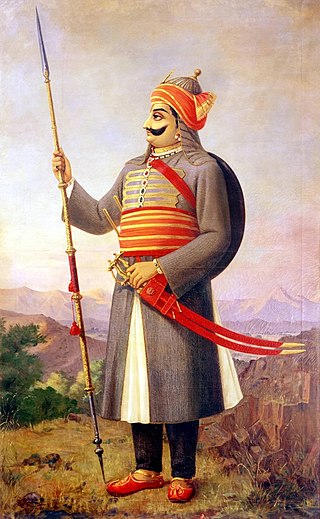
Pratap Singh I, popularly known as Maharana Pratap, was a king of Kingdom of Mewar, a princely state in north-western India in the present-day state of Rajasthan. He is notable for leading the Rajput resistance against the expansionist policy of the Mughal Emperor Akbar including the Battle of Haldighati.

Dhebar Lake is India's second largest artificial fresh water lake in India. It is located in the Salumber District of Rajasthan State in western India. It has an area of 87 km2 (34 sq mi) when full, and was created at Namla Thikana (rathore-patvi) in the 17th century, when Rana Jai Singh of Udaipur built a marble dam across the Gomati River. It is about 19 km (12 mi) from the district headquarters of Salumbar. When first built, it was the largest artificial lake in the world. The surrounding Jaisamand Wildlife Sanctuary around Dhebar Lake can be reached by the state highway to Banswara from Udaipur. Jaisamand Wildlife Sanctuary protects about 162.0 square kilometres (16,200 ha), mostly teak forest, on the shores of Dhebar Lake. The lake has three islands measuring from 10 to 40 acres each. The Dhebar Lake Marble Dam is 300.0 m (984.3 ft) long and is a part of the "Heritage Monuments of India". The dam also has the Hawa Mahal Palace, winter Capital of the erstwhile Maharanas of Mewar. 1687 to 1691
Gogunda is a town and tehsil headquarters of Gogunda Tehsil in Udaipur district, located about 35 km (22 mi) in north-west from Udaipur city in the Indian state of Rajasthan. It is situated on a high mountain in Aravalli hills and is reached by crossing a difficult mountain pass.
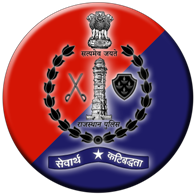
The Rajasthan Police is the law enforcement agency for the state of Rajasthan in India. The Rajasthan Police has its headquarters in the Jaipur, the state capital. The motto of the force is "committed to serve".
Kherwara Chhaoni is a census town in the Udaipur district in the Indian state of Rajasthan. It is part of the Vagad region, which includes the districts of Dungarpur, Banswara and parts of Udaipur district. It is in close proximity to two major highways, National Highway 8 and Rajasthan State Highway 76 and National Highway 927A passes through it. Its name derives from the large number of Kher (Khair) trees in the region in the past.
Rikhabdeo ( Rishabhadeo) is a town in Udaipur district in the state of Rajasthan, in north-west India.

The Kingdom of Mewar, sometimes known as Udaipur State, was an independent kingdom in Rajputana region of India, ruled by the Sisodia dynasty. It was established around the 6th century by the minor rulers of the Nagada-Ahar region of Udaipur and later, in the 10th century, it transformed into an independent state under Rawal Bharttripatta II.
Bhainsrorgarh Fort or Bhainsror Fort is an ancient fort that has become a major tourist spot in the state of Rajasthan, India.
Thakur Kesari Singh Barhath was an Indian revolutionary leader, freedom fighter, and educator from the state of Rajasthan. He was the patriarch of the Barhath family, members of which participated in anti-British activities Barhath was also known as Rajasthan Kesari.
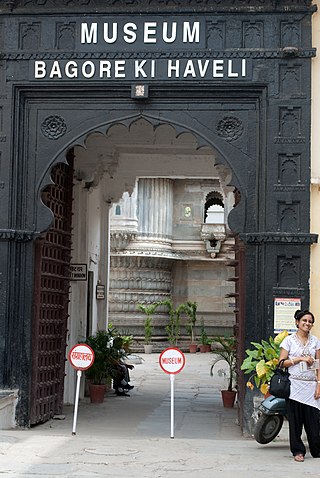
Bagore-ki-Haveli is a haveli in Udaipur in Rajasthan state in India. It is right on the waterfront of Lake Pichola at Gangori Ghat. Amar Chand Badwa, the Prime Minister of Mewar, built it in the eighteenth century.
The State Armed Police Forces of India are the police units established for dealing with serious law and order situations requiring a higher level of armed expertise than normal. The State Armed Police Forces exist in addition to the ordinary police services of the various states.

Maharana Amar Singh I, the Maharana ruler of Mewar Kingdom, was the eldest son and successor of Maharana Pratap I.He was the 14th Rana of Mewar,ruling from January 19, 1597 till his death on January 26, 1620.

Maharana Bhim Singh was the 26th Maharana of the Sisodia house of Mewar and the first Maharana of the Kingdom of Mewar. He was the second son of Maharana Ari Singh II and younger brother of Maharana Hamir Singh II.
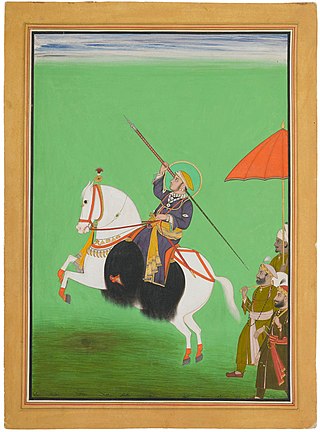
Maharana Shambhu Singh, was the Maharana of Princely state of Udaipur. He was a son Sher Singh of Bagore and nephew of Maharana Swarup Singh. The rich and diverse land of India had faced numerous invasions and marauding before the British set their foot as merchants and slowly took over the dominance of the Indian main land. With the great Indian rebellion of 1857, the governance of India was transferred to the Queen and a new era had begun with Maharana Shambhu Singh ascending the throne of Mewar.

Kotra is a tehsil of Udaipur district in Rajasthan, India, consisting of 262 revenue villages and 31 panchayats. The tehsil is bordered to the north by Pali and Sirohi districts, to the east by Gogunda and Jhadol tehsils, and to the south by Gujarat state. The tehsil headquarter is located in the village of Kotra, southwest of the Udaipur at a distance of 57 km and 120 km by road.
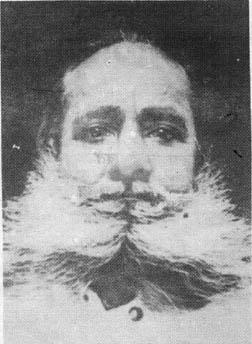
Motilal Tejawat , (1885–1963) was the leader of the Eki Movement that was agitated in the 1920s in the adivasi-dominated border areas of present-day Rajasthan and Gujarat.
The beginning of the Eki Movement is generally attributed to the events at the Matrikund fair in Chittod. Here, a group of adivasis agreed to desist from paying taxes to jagirdars until the Maharana addressed the problems with the jagirdari system.
Bhomat is a mountainous and forested area in southern Rajasthan, covering all or parts of the tehsils of Kotra, Jhadol and Kherwara in Udaipur district. During British rule, the region was also referred to as 'Hilly Tracts of Mewar'.

Charles Stewart Thompson was the first medical missionary in Kherwara Chhaoni in Rajputana, the Bhils region of Central India. His schools, famine relief centers, and medical service transformed care in the region.












